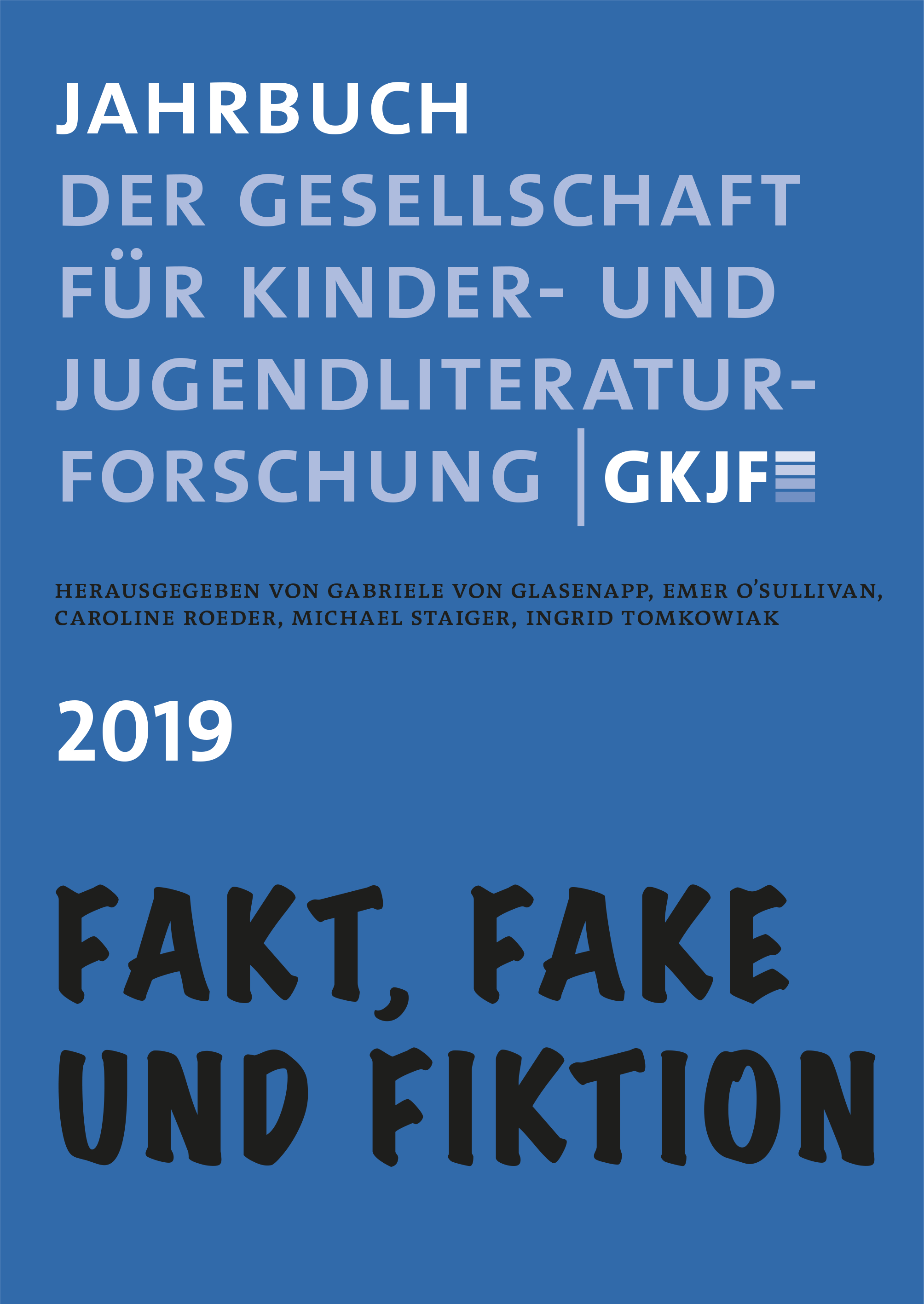Fiktionalität des Faktischen
Theoretische Überlegungen zum Kinder- und Jugendsachbuch
DOI:
https://doi.org/10.21248/gkjf-jb.34Abstract
Artikelbeginn:
[English title and abstract below]
Am 1. April 1989 wird das Empire State Building von einem reichen Ölscheich gekauft, der es Stein für Stein, Stahlstrebe für Stahlstrebe, im Wüstensand wieder aufbauen lassen will. Der Schotte James Mac Killian reist von 1923–1925 in einem Heißluftballon um die Welt und berichtet davon. Und in den Fragmenten des Geographenvolks der Orbæ lassen sich versunkene Welten erahnen, die sich mutige Reisende erschlossen und dokumentiert haben. Irritiert mag man sich fragen, ob einem diese Fakten entgangen sind, oder ob David Macaulays Unbuilding (1980) fake news ist, Caroline Mac Killians Journey of the Zephyr (2010) eine Lüge und die beeindruckende Bildbandtrilogie von François Place, Atlas des géographes d’Orbæ (1996–2000), eine unverfrorene Fälschung. Oder sind alle drei ›einfach‹ Bilderbücher und somit ohnehin Fiktion, ja Kunst mit all den ihr zustehenden Freiheiten?
Fictionality of the Factual
Reflections on the Poetics of Non-Fiction for Young Readers
Drawing on recent research in narratology and theories of fiction, this article proposes ways of productively looking at nonfiction for children beyond the factfiction divide. The key to a differentiated analytical toolkit is the semantic distinction between the real and fictional content on the one hand – the question of referentiality – and the pragmatic difference between factual and fictional ways of presenting it on the other hand – whether it lays a claim or not to referential truthfulness on the discursive level. These categories, analysed according to a threestep model developed by NickelBacon, Groeben and Schreier (2000), allow for a nuanced description of the many hybrid forms of nonfiction, especially information picture books. This article will present a typology of different variations on the ›fictionality of the factual‹ and the ›factuality of the fictional‹ in current information books for young readers, and show that there is more fiction in nonfiction than is commonly assumed.
Downloads
Veröffentlicht
Ausgabe
Rubrik
Lizenz
Copyright (c) 2021 Jahrbuch der Gesellschaft für Kinder- und Jugendliteraturforschung

Dieses Werk steht unter der Lizenz Creative Commons Namensnennung - Nicht-kommerziell 4.0 International.





